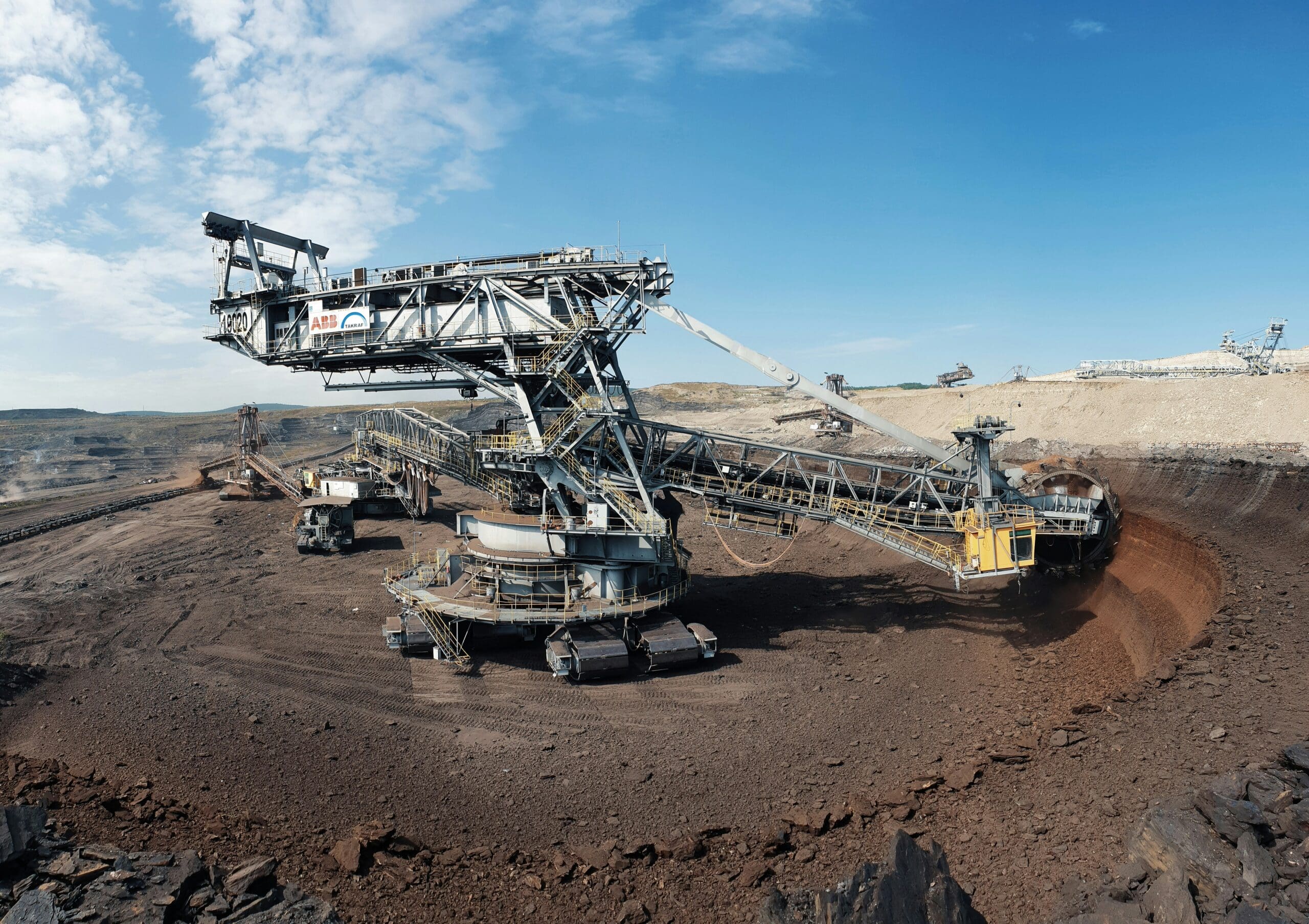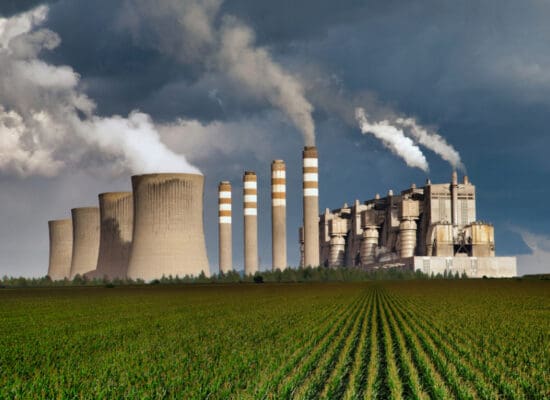
On 8 April 2025, the Innovation Regions for a Just Energy Transition (IKI JET) project held an expert exchange on coal mine methane (CMM) emissions. Speakers from the International Energy Agency (IEA), the United Nations Economic Commission for Europe (UNECE), Ember, and Eisenmann Environmental Technology attended the online event. They highlighted the impact of coal mine methane emissions as a major climate pollutant, discussed the availability of methane data and its measures, and showcased technical and economically viable solutions for using methane.
Research insights
The session began with Tomás de Oliveira Bredariol, Energy and Environmental Policy Analyst at the IEA, who presented an overview of CMM as a potent climate pollutant and safety hazard that is largely overlooked in climate policy. CMM emissions—which mainly come from underground mines—can be reduced by more than 50% with existing technologies. The abatement prospects vary by coal type (thermal coal emits more than coking coal, for example) and by country, with China, Russia, Indonesia, and India—the four biggest emitters—being responsible for around 75% of total CMM emissions. Tomás emphasised that methane abatement is one of the most cost-effective ways of reducing greenhouse gas emissions, at a price equivalent to about USD 20 per tCO2e (tons of carbon dioxide equivalent). This means that abatement measures are economically viable, which also makes them scalable. However, Tomás also noted that economic and regulatory barriers are hindering action and that a mix of mandates and incentives is essential to scale up cost-effective mitigation, which calls for swiftly implementing policies like the EU Methane Regulation.
Next, Chiara Giamberardini and Michal Drabik presented the UNECE’s work on CMM, including the organisation’s Group of Experts on Coal Mine Methane and Just Transition, best-practice guidelines (see below), and the CMM Emission Estimation Tool, which helps to estimate the annual methane emissions from underground mines. They highlighted the importance of monitoring emissions and making data available, quoting a statement from the Global Methane Initiative (GMI) Coal Mines Subcommittee meeting from 2023: “Lack of transparent, reliable, and timely data on coal sector operations and emissions is the number one barrier for CMM projects.” The speakers referred to four sources of data:
- site-level data
- remote sensing data (observations on emissions obtained by drones, aircraft, and satellites)
- national inventories
- public data and emissions modelling.
Michal Dabrik emphasised that reliable data is often hard to obtain—for instance, due to technical and financial limitations. The speakers highlighted the need for accessible, robust, and balanced systems that ensure data quality and allow for independent verification.
Sabina Assan from Ember showed that even though CMM is a major contributor to global greenhouse gas emissions, we already have proven and scalable technologies that can capture and destroy these emissions across active underground, surface, and closed mines. Among the available solutions, the most cost-effective and widely implemented is that of draining methane from active underground mines before coal is extracted, which captures high-concentration gas before it enters mine airways. The resulting high-purity gas is suitable for direct energy recovery, meaning that it can be used to generate electricity or heat, sold as pipeline-quality gas, or flared when utilisation is not feasible. In contrast, ventilation air methane (VAM)—a form of CMM that exists in the ventilation systems that are used to remove methane from underground coal mines for safety purposes—consists of large volumes of air with a low methane concentration. Although it is technically feasible to reduce these emissions (for example, by using regenerative thermal oxidisers), it is less commonly done because of the higher cost and lower methane concentrations.
Sabina went on to explain that even after mine closure, abandoned mine methane (AMM) can still be harnessed for heat and electricity. This has been demonstrated by successful policy-driven recovery efforts in Germany. For instance, introducing feed-in tariffs for electricity from recovered methane enabled large-scale mitigation and supplied energy to thousands of households. Surface mine methane mitigation also has potential for reducing methane emissions. One of the options is pre-drainage, which involves drilling into coal seals to release methane before mining starts. Although this approach is not yet widely used, it shows promising results: Recent studies in Australia indicate emission reductions of 38% to 46%, especially where methane can replace diesel or be sold and where carbon pricing creates financial incentives. Ultimately, the main obstacles are not technological, but economic and regulatory—including limited incentives, weak regulation, and industry resistance to investing in methane mitigation.
Peter Börgardts from Eisenmann Environmental Technology GmbH presented a case study on the successful application of regenerative thermal oxidisers (RTOs) for CMM mitigation in China using German technology. These RTOs can safely burn methane from coal mines without extra fuel if there is enough methane in the air. With over 2,800 installations worldwide, Eisenmann’s RTOs offer high methane destruction rates (up to 99.6%) and thermal efficiency (95%), making them a technically robust and economically viable solution—especially when methane concentrations reach between 0.2% and 1.2%. A minimum methane concentration of around 0.2% is needed for the system to become self-sufficient—meaning it doesn’t need additional fuel to keep running. And if the methane concentration goes higher—up to 1.2%, which is still well below any explosion risk—it can even generate steam or electricity in addition to reducing emissions. The advanced 10-chamber RTO design eliminates methane emission spikes, improving both environmental and financial performance. The projects in China have demonstrated that the combination of effective methane capture, optimised mixing, and energy recovery systems can create sustainable models for CMM use without relying on external fuel sources.
The panel opened with a discussion on AMM and the significant data gaps surrounding its measurement and monitoring. Michal (UNECE) emphasised that data on AMM emissions is hugely incomplete—a view echoed by other panellists, who noted that locating and identifying abandoned mines, especially in remote areas, is a major challenge. Even once they have been located, the lack of regulation and ownership clarity makes monitoring difficult. Sabina (Ember) spoke about flooding closed mines, noting that in theory, this could reduce emissions because the water can act as a physical barrier, covering coal seams and sealing pathways that allow methane to escape. However, she highlighted that new studies have found that over time, biogenic methane can be generated in flooded mines due to microbial activity. This means that even though emissions may drop initially, flooded mines could become a new source of methane (but more long-term measurements are needed to assess this risk). On the economic feasibility in low- and middle-income countries, Tomás (IEA) noted that uptake of CMM abatement remains limited without incentives such as carbon markets, Article 6 mechanisms, or national regulation. Some projects, however, can be cost-neutral or even cost-saving, and these should be prioritised where possible. Finally, to develop an initial regional emissions assessment, Tomás recommended identifying mine types, ventilation systems, and methane concentrations as a starting point, followed by a targeted evaluation of mitigation potential.
Key takeaways
- Methane abatement is one of the fastest and most cost-effective ways of reducing greenhouse gas emissions, with technologies that are already available and scalable.
- CMM emissions from underground mines can be reduced by over 50% using current technologies. The biggest obstacles are regulatory and financial barriers, not technological limitations.
- Delaying policy action is undermining potential climate benefits, so regulators should implement policies sooner rather than later.
- There is a lack of globally harmonised, transparent, site-level, and consistently measured data on CMM (including from abandoned mines). Data is often fragmented, technical, and inaccessible.
- Methane emissions from coal mines could be more than twice as high as government estimates.
- Depending on the concentration of methane, mitigation options can be profitable when the methane is utilised.
Speakers
Sabina Assan, Coal Mine Methane Analyst, EMBER
Peter Börgardts, Head of Sales, Eisenmann Environmental Technology GmbH
Michal Drabik, Economic Affairs Officer, UNECE
Chiara Giamberardini, Economic Affairs Officer, UNECE
Tomás de Oliveira Bredariol, Energy and Environmental Policy Analyst, IEA
More information
+ Best Practice Guidance for Effective Methane Drainage and Use in Coal Mines
+ Best Practice Guidance for Effective Methane Recovery and Use from Abandoned Coal Mines
+ Best Practice Guidance for Effective Management of Coal Mine Methane at National Level: Monitoring, reporting, verification and mitigation
+ Best Practice Guidance on Ventilation Air Methane (VAM) Mitigation
See all presentations here:
See the full recording here:
Stay Informed and Engaged
Subscribe to the Just Energy Transition in Coal Regions Knowledge Hub Newsletter
Receive updates on just energy transition news, insights, knowledge, and events directly in your inbox.


